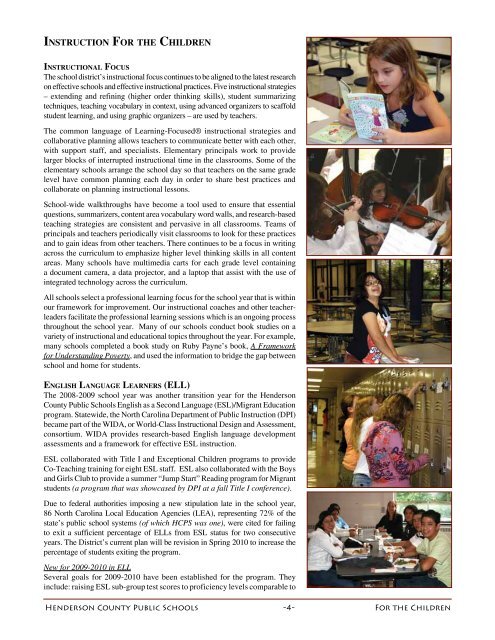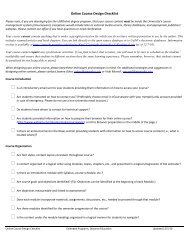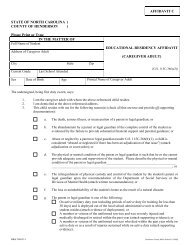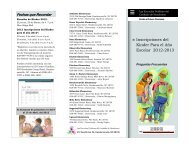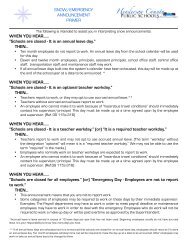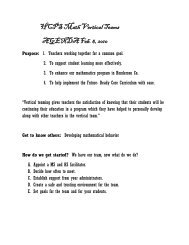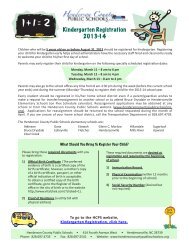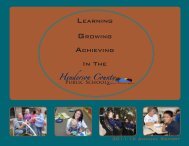For the Children - Henderson County Public Schools
For the Children - Henderson County Public Schools
For the Children - Henderson County Public Schools
You also want an ePaper? Increase the reach of your titles
YUMPU automatically turns print PDFs into web optimized ePapers that Google loves.
Instruction <strong>For</strong> <strong>the</strong> <strong>Children</strong><br />
Instructional Focus<br />
The school district’s instructional focus continues to be aligned to <strong>the</strong> latest research<br />
on effective schools and effective instructional practices. Five instructional strategies<br />
– extending and refining (higher order thinking skills), student summarizing<br />
techniques, teaching vocabulary in context, using advanced organizers to scaffold<br />
student learning, and using graphic organizers – are used by teachers.<br />
The common language of Learning-Focused® instructional strategies and<br />
collaborative planning allows teachers to communicate better with each o<strong>the</strong>r,<br />
with support staff, and specialists. Elementary principals work to provide<br />
larger blocks of interrupted instructional time in <strong>the</strong> classrooms. Some of <strong>the</strong><br />
elementary schools arrange <strong>the</strong> school day so that teachers on <strong>the</strong> same grade<br />
level have common planning each day in order to share best practices and<br />
collaborate on planning instructional lessons.<br />
School-wide walkthroughs have become a tool used to ensure that essential<br />
questions, summarizers, content area vocabulary word walls, and research-based<br />
teaching strategies are consistent and pervasive in all classrooms. Teams of<br />
principals and teachers periodically visit classrooms to look for <strong>the</strong>se practices<br />
and to gain ideas from o<strong>the</strong>r teachers. There continues to be a focus in writing<br />
across <strong>the</strong> curriculum to emphasize higher level thinking skills in all content<br />
areas. Many schools have multimedia carts for each grade level containing<br />
a document camera, a data projector, and a laptop that assist with <strong>the</strong> use of<br />
integrated technology across <strong>the</strong> curriculum.<br />
All schools select a professional learning focus for <strong>the</strong> school year that is within<br />
our framework for improvement. Our instructional coaches and o<strong>the</strong>r teacherleaders<br />
facilitate <strong>the</strong> professional learning sessions which is an ongoing process<br />
throughout <strong>the</strong> school year. Many of our schools conduct book studies on a<br />
variety of instructional and educational topics throughout <strong>the</strong> year. <strong>For</strong> example,<br />
many schools completed a book study on Ruby Payne’s book, A Framework<br />
for Understanding Poverty, and used <strong>the</strong> information to bridge <strong>the</strong> gap between<br />
school and home for students.<br />
English Language Learners (ELL)<br />
The 2008-2009 school year was ano<strong>the</strong>r transition year for <strong>the</strong> <strong>Henderson</strong><br />
<strong>County</strong> <strong>Public</strong> <strong>Schools</strong> English as a Second Language (ESL)/Migrant Education<br />
program. Statewide, <strong>the</strong> North Carolina Department of <strong>Public</strong> Instruction (DPI)<br />
became part of <strong>the</strong> WIDA, or World-Class Instructional Design and Assessment,<br />
consortium. WIDA provides research-based English language development<br />
assessments and a framework for effective ESL instruction.<br />
ESL collaborated with Title I and Exceptional <strong>Children</strong> programs to provide<br />
Co-Teaching training for eight ESL staff. ESL also collaborated with <strong>the</strong> Boys<br />
and Girls Club to provide a summer “Jump Start” Reading program for Migrant<br />
students (a program that was showcased by DPI at a fall Title I conference).<br />
Due to federal authorities imposing a new stipulation late in <strong>the</strong> school year,<br />
86 North Carolina Local Education Agencies (LEA), representing 72% of <strong>the</strong><br />
state’s public school systems (of which HCPS was one), were cited for failing<br />
to exit a sufficient percentage of ELLs from ESL status for two consecutive<br />
years. The District’s current plan will be revision in Spring 2010 to increase <strong>the</strong><br />
percentage of students exiting <strong>the</strong> program.<br />
New for 2009-2010 in ELL<br />
Several goals for 2009-2010 have been established for <strong>the</strong> program. They<br />
include: raising ESL sub-group test scores to proficiency levels comparable to<br />
<strong>Henderson</strong> <strong>County</strong> <strong>Public</strong> <strong>Schools</strong> -4- <strong>For</strong> <strong>the</strong> <strong>Children</strong>


